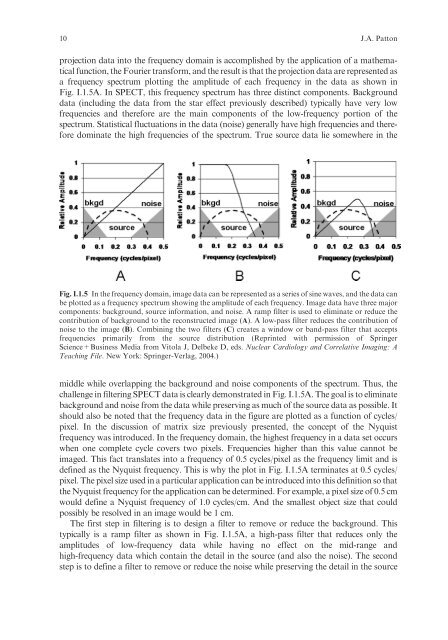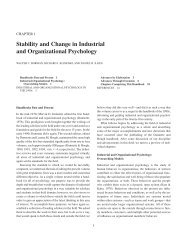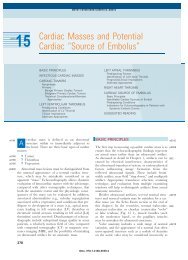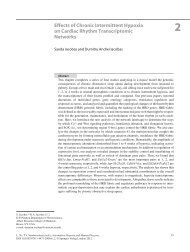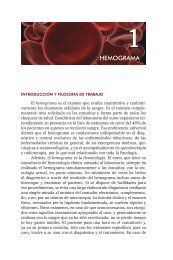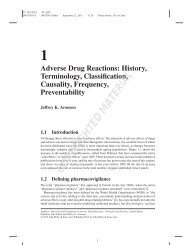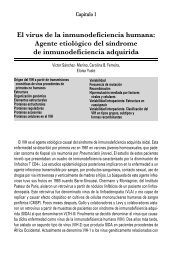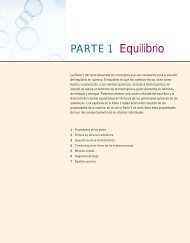Download Sample pages 1 (pdf, 5.5 MB) - Springer
Download Sample pages 1 (pdf, 5.5 MB) - Springer
Download Sample pages 1 (pdf, 5.5 MB) - Springer
Create successful ePaper yourself
Turn your PDF publications into a flip-book with our unique Google optimized e-Paper software.
10 J.A. Patton<br />
projection data into the frequency domain is accomplished by the application of a mathematical<br />
function, the Fourier transform, and the result is that the projection data are represented as<br />
a frequency spectrum plotting the amplitude of each frequency in the data as shown in<br />
Fig. I.1.5A. In SPECT, this frequency spectrum has three distinct components. Background<br />
data (including the data from the star effect previously described) typically have very low<br />
frequencies and therefore are the main components of the low-frequency portion of the<br />
spectrum. Statistical fluctuations in the data (noise) generally have high frequencies and therefore<br />
dominate the high frequencies of the spectrum. True source data lie somewhere in the<br />
Fig. I.1.5 In the frequency domain, image data can be represented as a series of sine waves, and the data can<br />
be plotted as a frequency spectrum showing the amplitude of each frequency. Image data have three major<br />
components: background, source information, and noise. A ramp filter is used to eliminate or reduce the<br />
contribution of background to the reconstructed image (A). A low-pass filter reduces the contribution of<br />
noise to the image (B). Combining the two filters (C) creates a window or band-pass filter that accepts<br />
frequencies primarily from the source distribution (Reprinted with permission of <strong>Springer</strong><br />
Science+Business Media from Vitola J, Delbeke D, eds. Nuclear Cardiology and Correlative Imaging: A<br />
Teaching File. New York: <strong>Springer</strong>-Verlag, 2004.)<br />
middle while overlapping the background and noise components of the spectrum. Thus, the<br />
challenge in filtering SPECT data is clearly demonstrated in Fig. I.1.5A. The goal is to eliminate<br />
background and noise from the data while preserving as much of the source data as possible. It<br />
should also be noted that the frequency data in the figure are plotted as a function of cycles/<br />
pixel. In the discussion of matrix size previously presented, the concept of the Nyquist<br />
frequency was introduced. In the frequency domain, the highest frequency in a data set occurs<br />
when one complete cycle covers two pixels. Frequencies higher than this value cannot be<br />
imaged.Thisfacttranslatesinto a frequency of 0.5 cycles/pixel as the frequency limit and is<br />
defined as the Nyquist frequency. This is why the plot in Fig. I.1.5A terminates at 0.5 cycles/<br />
pixel. The pixel size used in a particular application can be introduced into this definition so that<br />
the Nyquist frequency for the application can be determined. For example, a pixel size of 0.5 cm<br />
would define a Nyquist frequency of 1.0 cycles/cm. And the smallest object size that could<br />
possibly be resolved in an image would be 1 cm.<br />
The first step in filtering is to design a filter to remove or reduce the background. This<br />
typically is a ramp filter as shown in Fig. I.1.5A, a high-pass filter that reduces only the<br />
amplitudes of low-frequency data while having no effect on the mid-range and<br />
high-frequency data which contain the detail in the source (and also the noise). The second<br />
step is to define a filter to remove or reduce the noise while preserving the detail in the source


